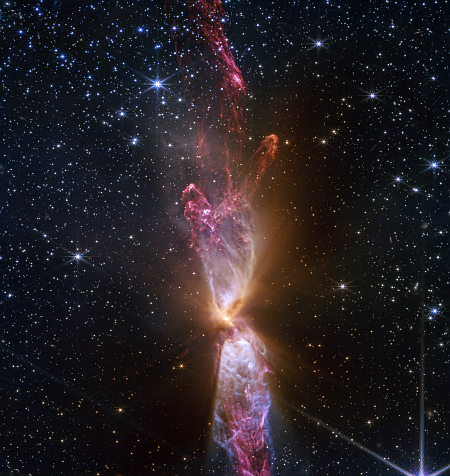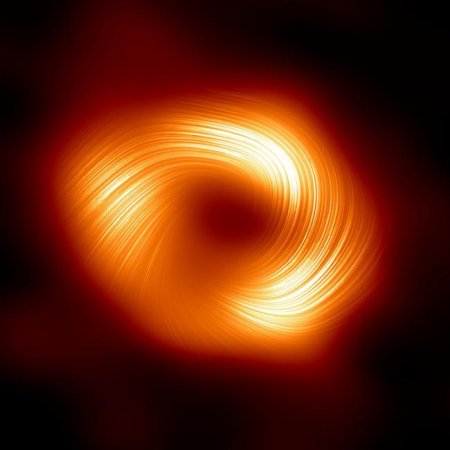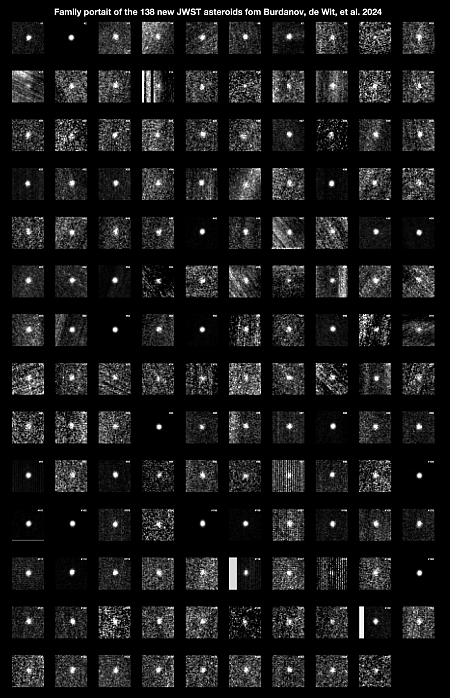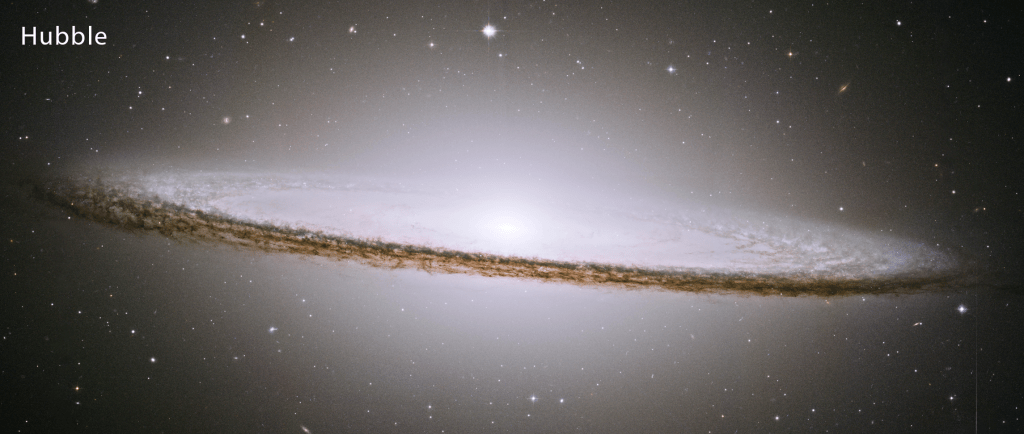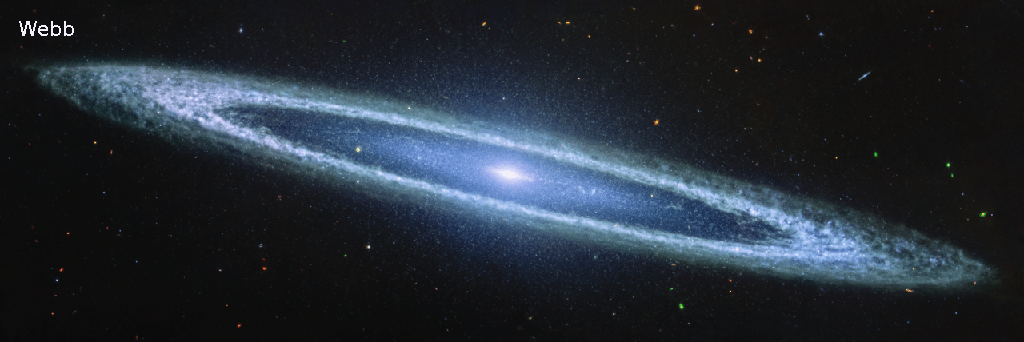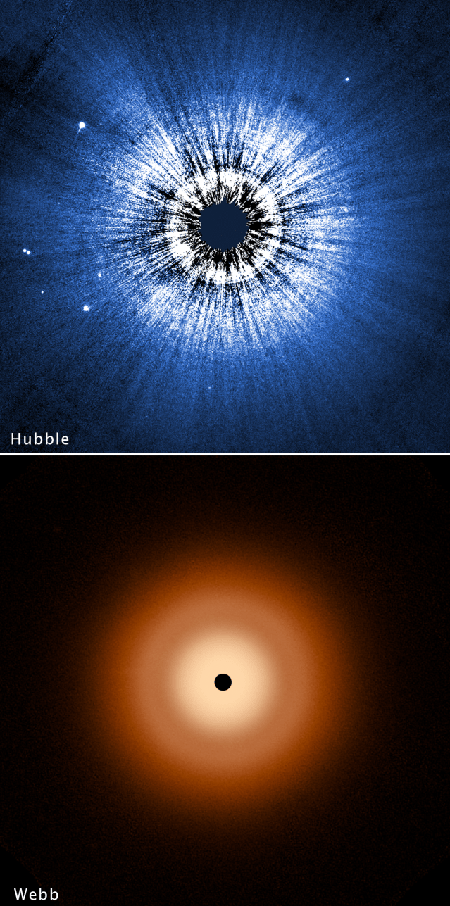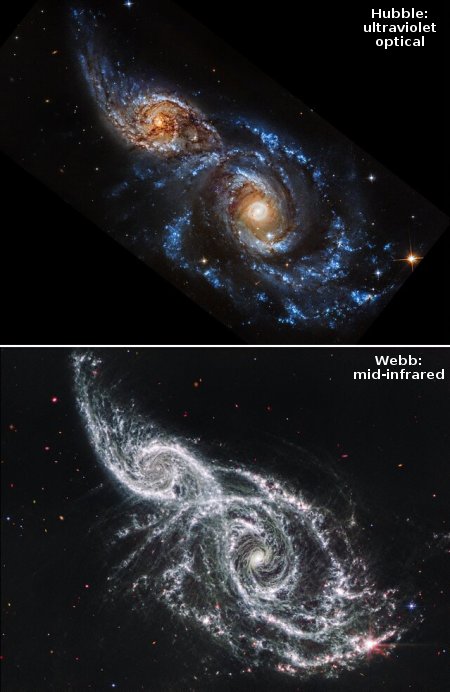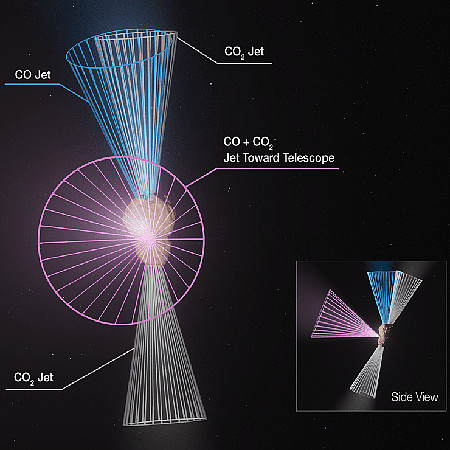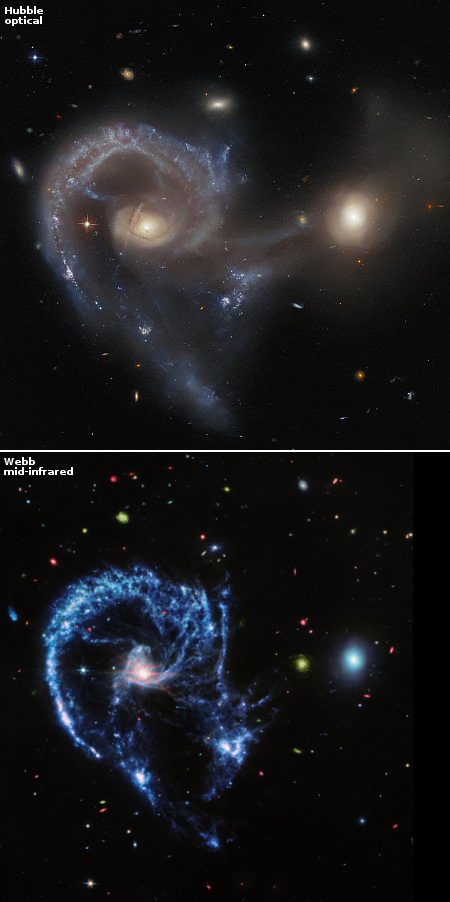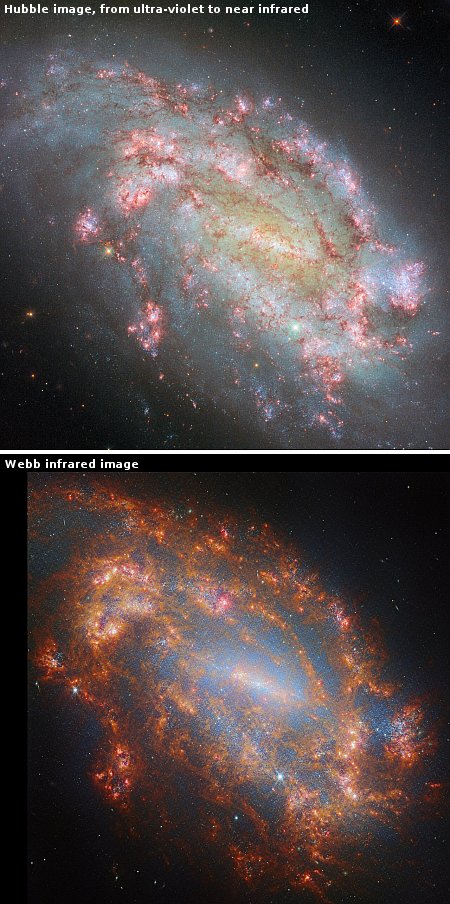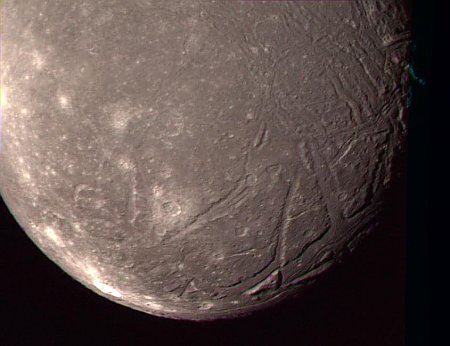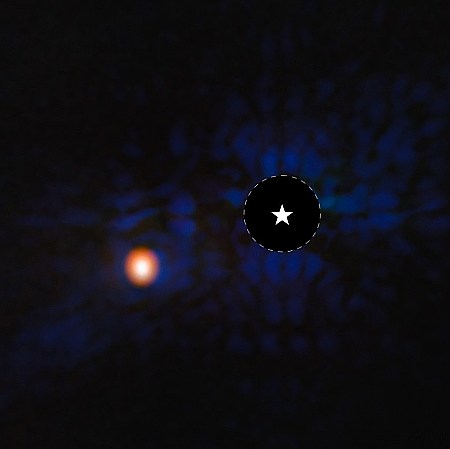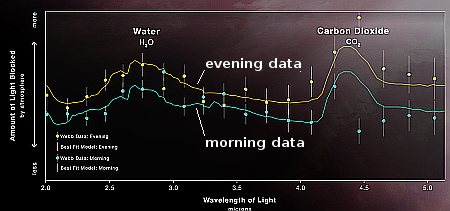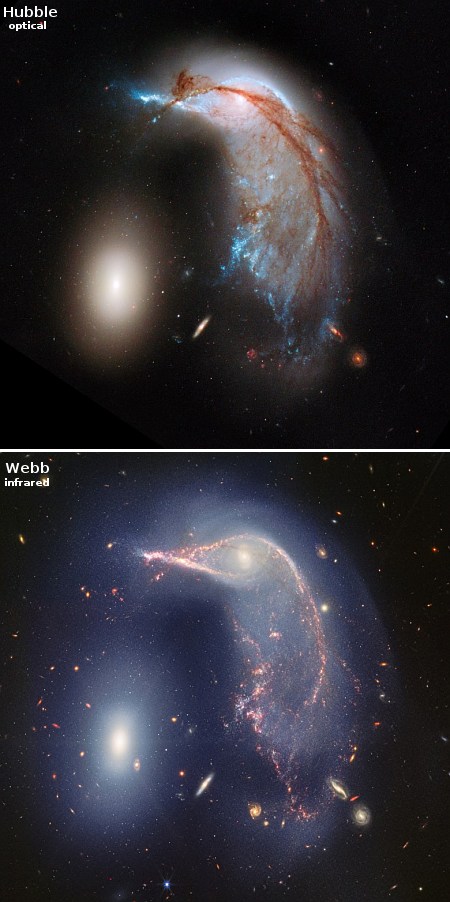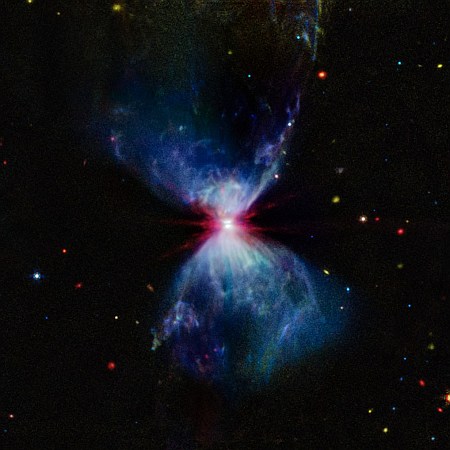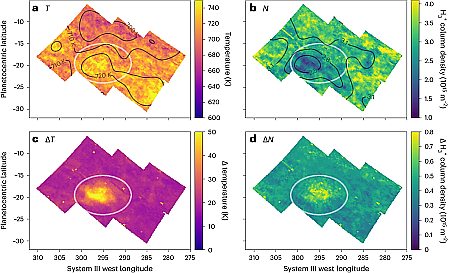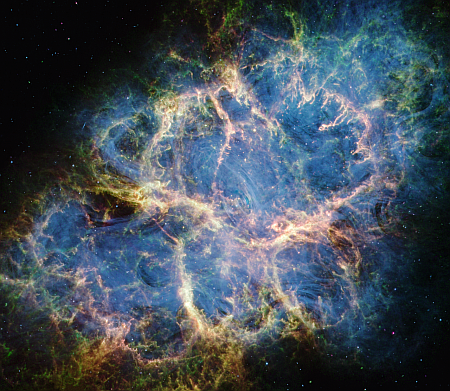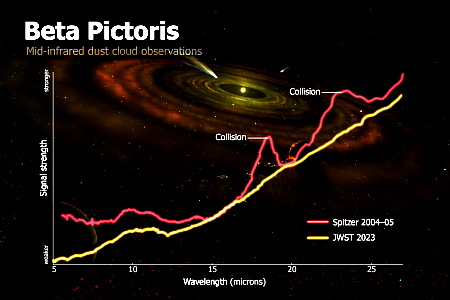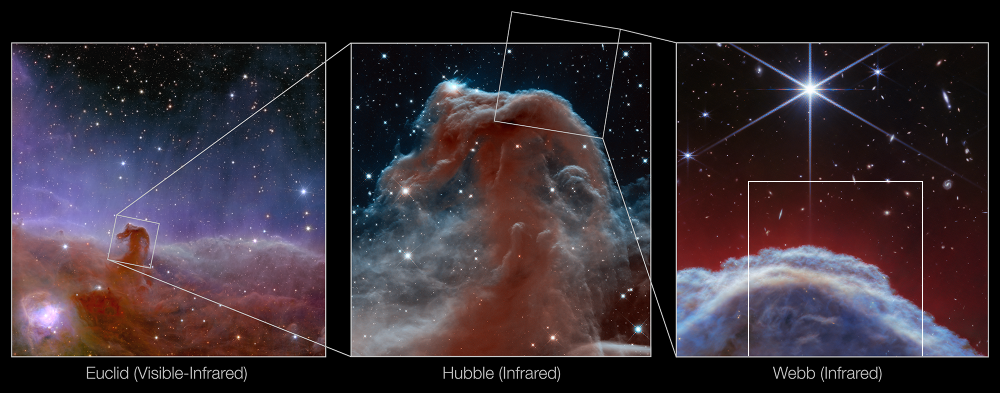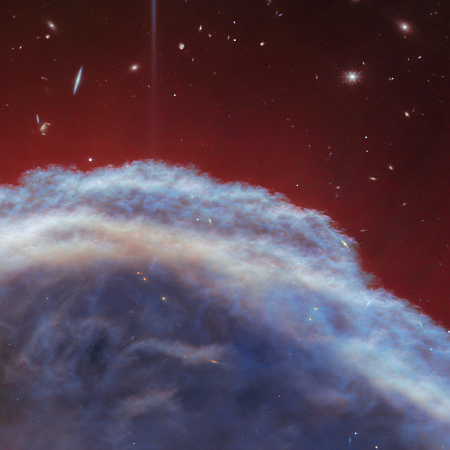Webb captures infrared view of a baby binary star system and its bi-polar jets
Cool image time! The infrared false-color picture to the right, reduced and sharpened to post here, was released today by the science team of the Webb Space Telescope. It shows the bi-polar jets spewing out from a newly formed binary of two very young stars as their interact during their formation process.
The two protostars responsible for this scene are at the center of the hourglass shape, in an opaque horizontal disk of cold gas and dust that fits within a single pixel. Much farther out, above and below the flattened disk where dust is thinner, the bright light from the stars shines through the gas and dust, forming large semi-transparent orange cones.
It’s equally important to notice where the stars’ light is blocked — look for the exceptionally dark, wide V-shapes offset by 90 degrees from the orange cones. These areas may look like there is no material, but it’s actually where the surrounding dust is the densest, and little starlight penetrates it. If you look carefully at these areas, Webb’s sensitive NIRCam (Near-Infrared Camera) has picked up distant stars as muted orange pinpoints behind this dust. Where the view is free of obscuring dust, stars shine brightly in white and blue.
To put it more simply, the accretion disk for the binary system lies at right angles to the much larger jets. The rotation of that disk as well as the stars causes those jets to flow up and down from the poles, with the existence of two stars producing the complex patterns in those jets.
As this image was focused mostly on studying the upper jet, it does not show the entire lower jet, which extends beyond the lower border.
Cool image time! The infrared false-color picture to the right, reduced and sharpened to post here, was released today by the science team of the Webb Space Telescope. It shows the bi-polar jets spewing out from a newly formed binary of two very young stars as their interact during their formation process.
The two protostars responsible for this scene are at the center of the hourglass shape, in an opaque horizontal disk of cold gas and dust that fits within a single pixel. Much farther out, above and below the flattened disk where dust is thinner, the bright light from the stars shines through the gas and dust, forming large semi-transparent orange cones.
It’s equally important to notice where the stars’ light is blocked — look for the exceptionally dark, wide V-shapes offset by 90 degrees from the orange cones. These areas may look like there is no material, but it’s actually where the surrounding dust is the densest, and little starlight penetrates it. If you look carefully at these areas, Webb’s sensitive NIRCam (Near-Infrared Camera) has picked up distant stars as muted orange pinpoints behind this dust. Where the view is free of obscuring dust, stars shine brightly in white and blue.
To put it more simply, the accretion disk for the binary system lies at right angles to the much larger jets. The rotation of that disk as well as the stars causes those jets to flow up and down from the poles, with the existence of two stars producing the complex patterns in those jets.
As this image was focused mostly on studying the upper jet, it does not show the entire lower jet, which extends beyond the lower border.

